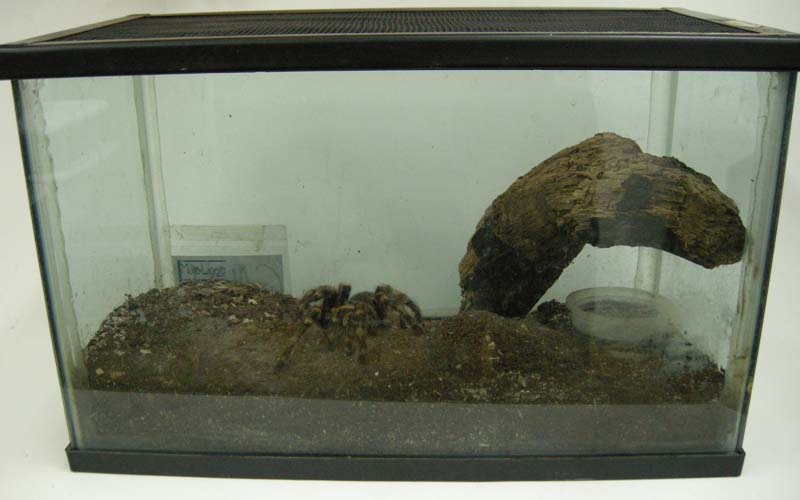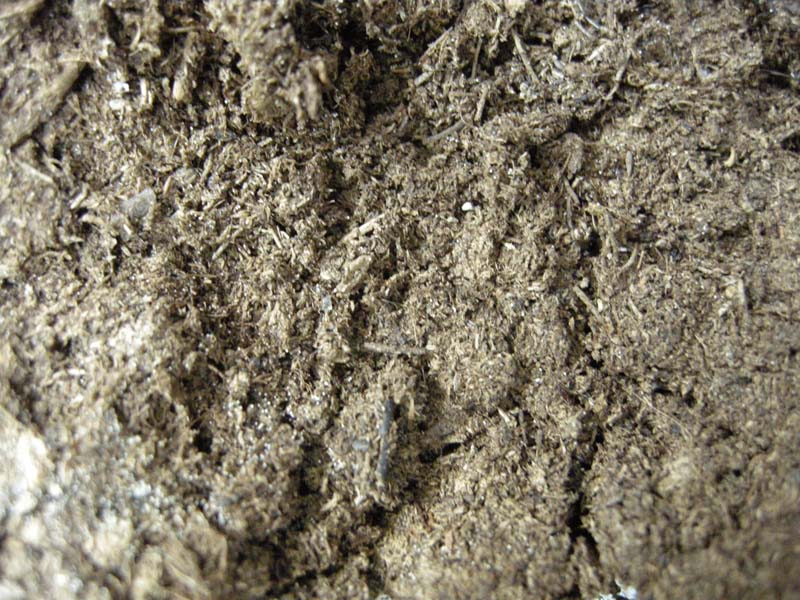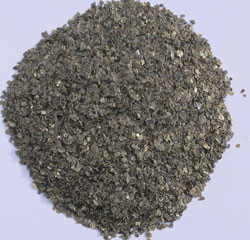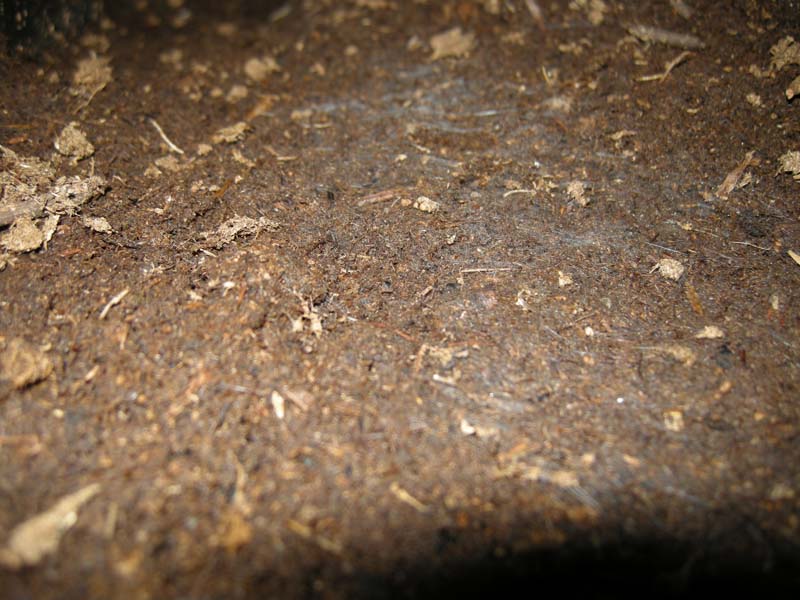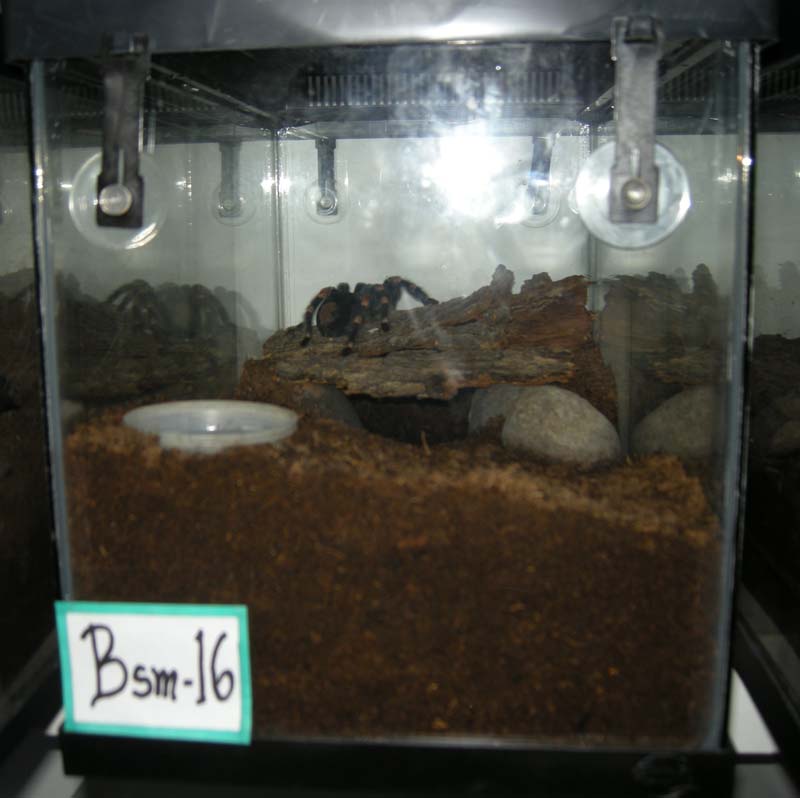
| Home > Upkeep > Substrates | ||||||||
|
Substrates
This issue has always been controversial, however, it´s actually very simple! What are we looking for in a substrate? First, it shouldn’t bother the tarantula. Second, it has to retain moisture as much as possible. Third, it should be free of pollutants, and sturdy enough so if our tarantula wants to dig, it can do so without having her house fall on top of her. And fourth, it should not be a breeding ground for other living creatures. A substrate that has leaves, twigs, and other foreign things could be bothersome for our tarantulas. These are sold with the purpose of making the terrarium look more natural. You must already know that tarantulas keep their homes squeaky-clean. They can’t stand a single twig or dry leaf in their dens, so buy the cleanest and most homogenous substrate you can find. The fact that it should also retain moisture as long as possible is of some relevance, since this will help keep maintenance to a minimum, and you won´t have to worry about moistening your terrarium as often. You can read more on this issue on the chapter on humidity, since it is not a good idea to keep your terrarium too humid, either. Contaminated substrates are very common in pet shops, gardening, and construction material stores. What do I mean by contaminated? I mean that these substrates come tainted with many spores, moulds, and mites. It is better to purchase a substrate that comes sealed and disinfected. And something VERY important is that it does not contain fertilizers or any other type of chemical components that are used for potted plants, but could kill our tarantula. We should not let our substrate become a breeding ground for other types of living creatures, such as fungi, mites, moulds, etc. But, how can we do this? By getting a substrate with a very acid pH that will stop proliferation. Once our requirements have been established, what substrates do we have available in the Mexican market that comply with these characteristics? I simply narrowed the options to 3 types of substrates:
Coconut.- Pros This is an excellent substrate, since it has two excellent features: It is very acid, and its pH hinders the growth of fungi and moulds; it is very inexpensive, and goes a long way. Cons The particles are quite large, and this sometimes makes it difficult for baby tarantulas to walk on its surface. Of the three substrates, this is the one that holds the least moisture, and when it dries it becomes very crumbly, which makes it hard to digs burrows. Vermiculite.- Pros This is the best substrate available for tree-dwelling tarantulas. It is 100% mineral, made from hydrated aluminum and magnesium silicates. This means that it will not let things grow on it, since if offers no type of nourishment. It is also an excellent retainer of moisture. Cons It is more expensive than coconut, and not as readily available. It is usually sold at nurseries specializing in orchids, tulips, and other rare flowers. Vermiculite also makes it impossible to dig galleries, because, once it begins to dry, all our pet spiders’ hard work begins to crumble. This makes it not suitable for diggers. Peat moss.- Pros I definitely recommend this as the best substrate, since it holds moisture in an excellent way, but not quite like vermiculite. It has a very acid pH, but not as acid as the coconut, and is excellent for digging tarantulas, because it holds its shape when it dries, and the tarantula’s den remains intact. Cons It is more expensive than coconut, but less than vermiculite. Sometimes it can be contaminated with fungi spores, although I have never detected any deterioration in my tarantulas when these invaders come out. It has an acid pH, which is good to keep moulds and other living creatures out. However, if you leave tarantula waste for a while, it can develop moulds that could be deadly to spiderlings. This product is readily available in large stores, such as Home Depot or Home Mart. You can also find it in retail nurseries. If you choose to use common soil, it is very important for you to sterilize it, since it will be very hard for you to know its origin or chemical components. I recommend that you bake small amounts of soil in your microwave oven in order to clean it out as much as possible. IMPORTANT! Once you have decided on a substrate, remember a very important rule: The distance between the container cover and the substrate should not be greater than twice the size of your tarantula. Why? Because it is very likely that your tarantula, during its exploration walks, will climb up on the lid and fall. As a result of this fall, she can become mortally injured if there is a larger distance, and even more so if you have placed decorations in the terrarium. A good home must have a substrate at least 15 cm deep so the tarantula can dig freely, and easily make her cave.
| Top of page |
|
